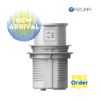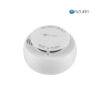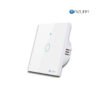If you work in a smart home system or an IoT device; You may be familiar with annual reports and data points; tell about opportunities when the house is connected. A recent report from Crimson Hexagon shows; from 2014 to 2017; Consumer reactions to smart home technology began to change; with more than 60% of consumers support this technology.
There are many factors that affect why consumers choose smart – entertainment homes; convenient; increase home efficiency and energy expenditure; security – but behind the scenes; most people who play a role in the IoT industry know one of the biggest barriers; for the application to be able to interact and the number of wireless protocols; Increasingly used in smart home devices.
Wireless protocols like Z-Wave and Wi-Fi are infrastructure-based backbones of IoT; These languages are used between devices; in some cases created cracked ecosystems, or create barriers and even more confusion for end-users.
When modern smart houses become more and more popular; The number of protocols and their functions also increases. While engineers; developers and manufacturers are trying to create what they feel is the best user experience; New protocols and technologies have been introduced; They all try to merge a multitude of connected products. To understand how we come to the current state of smart home protocols; Let users look at a brief history.

IoT before IoT: Looking back from the beginning
First: what is the function of a smart home wireless protocol? Simply said; A protocol is a language or function of how devices communicate and understand each other. Many argue that the birth of the modern smart home protocol since the 1970s with the creation of X10; First universal communication protocol for electronic devices. After that; a variety of other protocols, including Z-Wave; as well as UPB, Wi-Fi and Insteon have been developed to solve various problems; for consumer electronics and the home control market.
UPB was released in 1999; Using wiring for signal transmission and control; it delivers reliability and high transfer speeds through existing indoor wiring. It is a high-tech technology; Difficult, for those who make DIY with little or medium technical knowledge to apply.
The birth of Wi-Fi in the early 90s to transmit large data packets; Today Wi-Fi role; Smart indoor allows devices to connect and for users to enjoy remote control of home devices. Wi-Fi has challenged such as high device interference and large energy consumption; This is not ideal for battery-powered products. Follow Wi-Fi; is a new wave of protocols like Z-Wave and Insteon; Designed for home control by providing lower energy connectivity; efficient and use networks to enhance network signals.

Original technology for emerging connected houses
Designed by Smartlabs Inc.; Insteon is designed to bridge the gap between line-based and wireless protocols; use both. They were a unique solution at the time, but their closed ecosystem makes it difficult to accept larger consumers.
The original network technology; Zigbee is developed by HomeRF Alliance and is a wireless proprietary protocol; with many different configurations incompatible; mainly used in commercial markets; power and remote control.
Like Zigbee; Z-Wave is a network protocol introduced in 2001 by Danish company Zensys, and today owned by Silicon Labs. Z-Wave was built specifically for smart houses before anyone called it so; Enthusiasts and developers control families knowing that to be successful; a standard that not only uses low power and does not interfere with other consumer electronics devices; but also grows stronger (not slower) when devices are added.
Z-Wave’s legacy is one of the original grid technologies to continue home control today – Z-Wave is supported by the Z-Wave Alliance, a member group of leaders. Industry-driven industry standards that at the time of writing have more than 2400 Z-certified Wave Devices and more than 700 members.








